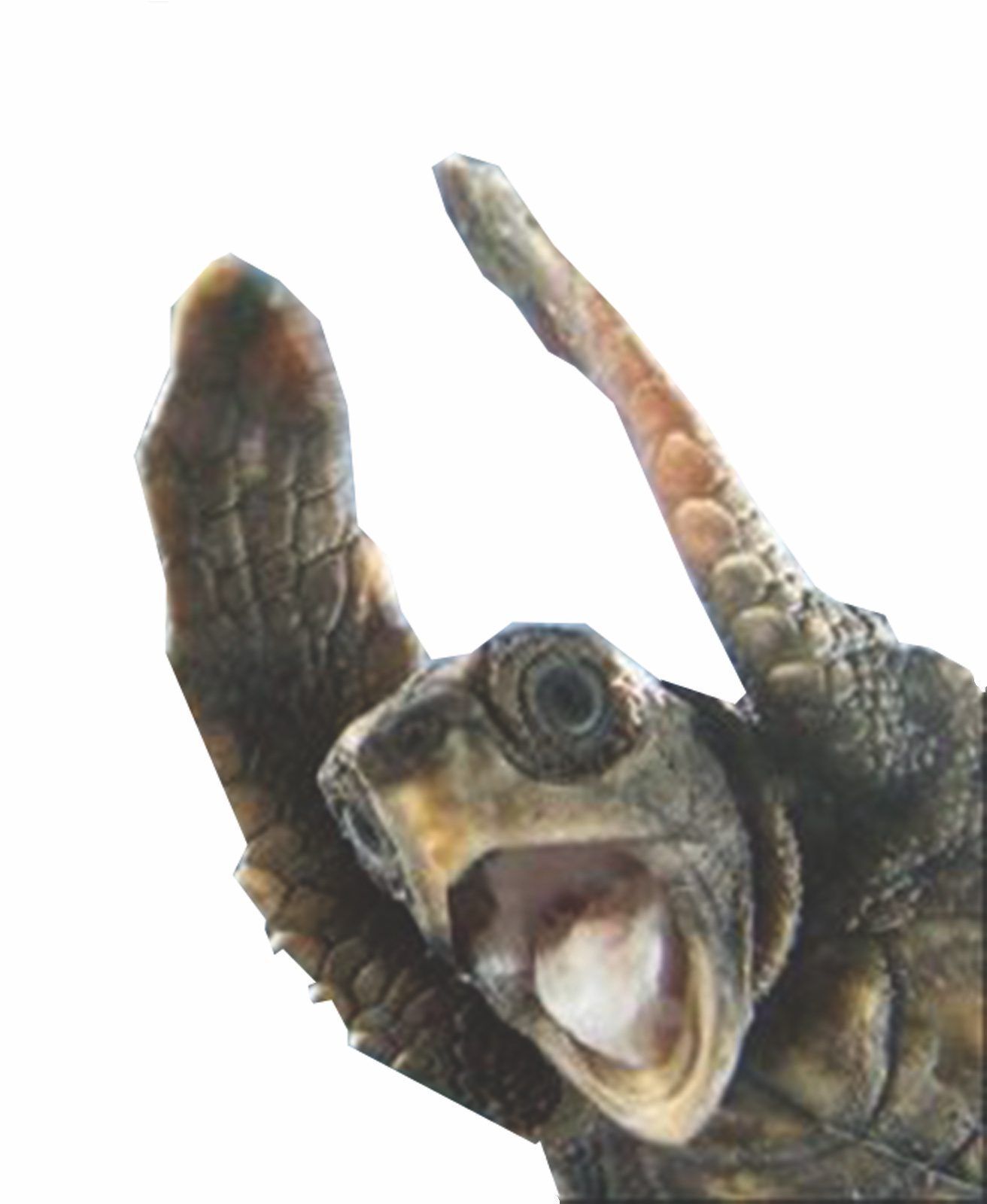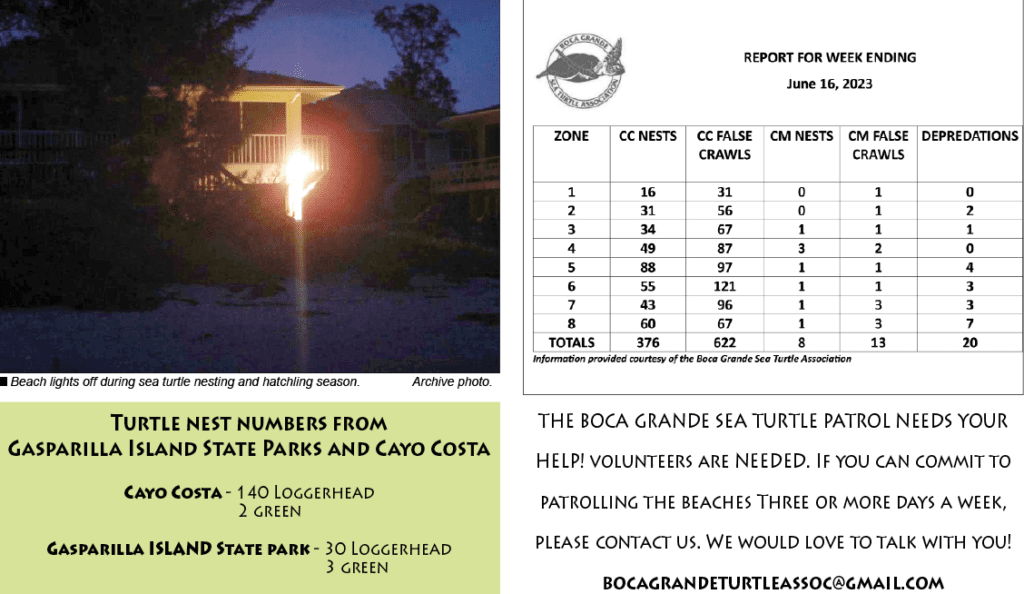41 turtle lighting complaints since March

Since March, 41 sea turtle lighting complaints have been logged with Lee County Code Enforcement. Of those 41, all but two (which were closed and voided) were sent notices and no violations were issued.
Addresses include many on Shore Lane, Gulf Boulevard, Gilchrist Avenue, Palm Avenue and a few beach access streets. The majority of the complaints refer to “back porch/interior lighting/exterior lighting directly/indirectly illuminating sea turtle nesting habitat.”
Sea turtles are born with the instinct to move toward the brightest direction. On a natural beach, this direction is the light of the open horizon. Lights that distract hatchlings can lead them toward houses and obstacles that can kill them or, at the very least, dehydrate them as they need the water from the Gulf soon after they hatch.
Hatchlings on the island have been found on roadways, in parking lots, under homes and cars and many other places due to manmade light sources.
Light restrictions are enforced May 1 to October 31, from 9 p.m. to 7 a.m.
There is such a thing as “turtle- friendly lighting,” though. When you invest in turtle-friendly lighting, you are not only investing in the future of Southwest Florida’s ecosystem, you may also be saving yourself a lot of money and trouble by being compliant with laws and codes that require properties on or near beaches to take precautions to protect sea turtles from light pollution.
Although the actual materials needed to provide such lighting are currently not available on the island, you can stop by the Barnichol Hardware Store to find out more. Last year they had a display to help residents and visitors understand the importance of keeping the beaches dark during turtle nesting season.
The FWC and the U.S. Fish and Wildlife Service have teamed up to develop the Wildlife Lighting Certification Program. This program is designed to educate the public, building industries and government officials on minimizing artificial light impacts to wildlife by identifying proper lighting methods and using appropriate lighting fixtures, lamps, and shields.
That being said, the FWC says there is no substitute for naturally dark habitats, so turning off unnecessary lights is the simplest, most effective and most energy-efficient solution to this issue. Other steps that cost nothing include closing blinds or curtains after dark.
Appropriate wildlife lighting meets three criteria: mounting the fixture as low as possible and using the lowest wattage necessary; using long wavelength (greater than 560 nm) light sources, such as amber, orange, and red LEDs; and using fixtures that keep the light contained and focused away from the beach.
For details, check out the website: Myfwc.com/conservation/you-conserve/lighting.
Compliant fixtures can be wall- or ceiling-mounted. They can be on poles or along roadways. There are a number of brands that feature turtle-friendly products. Resources and information are available at many hardware stores in the area.






